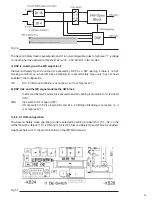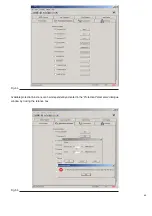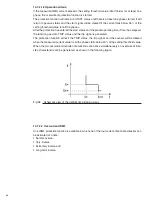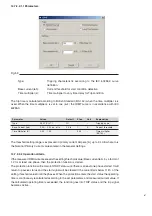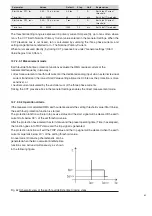
56
14.5.6.5 Maximum unsuccessful attempts
This built-in function manages a maximum of 10 accumulated (1) unsuccessful attempts to opera-
te (open or close) the CB, i.e. when either Close or Open operation is not completed (the CB does
not reach the desired position) at the maximum time Tmax.
The Maximum unsuccessful attempt function limits the stress on the IED power drive components
and signals the Anomaly condition to the operator.
An Auto-trip opening is carried out after each failed attempt.
In the case of a failed opening operation, other opening attempts will be launched until the opening
input remains active.
In the case of a failed closing operation, an Auto-trip opening will be made. For another closing
attempt it will be necessary to re-activate the closing signal.
When the number of Maximum unsuccessful attempts is reached an Anomaly alarm is issued and
the No Anomaly LED on the CB HMI goes the “Not Ready” Status. The “Unit Ready” LED turn off.
(1) The maximum number of unsuccessful operation attempts is cumulative, i.e. the IED stores the unsuccessful
attempts. Only 10 unsuccessful attempts (10 opening operations and 10 closing operations) are allowed. If the
operation is not carried out for any reason, a further 9 attempts are possible. If the second attempt is completed
successfully, there remain a further 9 “unsuccessful” attempts, whereas if it is not carried out correctly, a further
8 attempts are available, and so on. After 10 unsuccessful attempts, the unit passes into the “Not Ready” state
and signals the anomaly. In that case, it is necessary to reset the unit (disconnect the auxiliary power supply and
discharge the capacitors). Normal operations with positive outcome do not increase the counter. This function
preserves the IED components and obliges the operator to check the circuit-breaker.
14.5.6.6 Trip Free Function
Trip Free
(2)
is the capability of the CB to have the moving contacts return to and remain in the open
position when the opening operation is initiated after the closing operation is started, even if the
closing force and command are maintained.
To ensure proper breaking of the current that might be established, it may be necessary for the
contacts to momentarily reach the closed position.
The opening operation prevails over the closing operation. The IED opens the CB when a tripping
signal is received while a closing operation is being executed, even if the closing signal is maintained.
The Open command (both local and remote) always has priority over the close command: the Open
command must be processed on positive edge event but it is active with priority for the whole time
its state is high. In any case and condition, when the ED intercepts a valid Open Command, this has
to be performed as soon as possible (if necessary, it can be stored and performed later on). The
Open command is always possible independently of the CB status.
14.5.6.7 Anti-Pumping (Pump-Free) Function
The anti-pumping function ensures that only one closing-opening cycle is carried out when a
closing command followed by an opening command is active. The active closing command must
be cancelled and reset to perform a new closing operation.
The IED prevents re-closing after an opening operation as long as the Close Command is maintained
in the position for closing (active).
This function is only active when the CB is in the open position. If the close command is released
before the open command (positive edge event), the function is not active and the closing-opening
sequence is performed.
Note
Note
(2) According to ANSI IEEE
Std. C37.100-1992
requirements.
Summary of Contents for eVM1
Page 1: ...eVM1 Installation and service instructions 12 17 5 kV 630 1250 A 16 31 5 kA ...
Page 2: ...1 ...
Page 76: ...74 Fig 66 Fig 67 ...
Page 77: ...75 Fig 68 Fig 69 ...
Page 110: ...108 Notes ...
Page 111: ...1 ...








